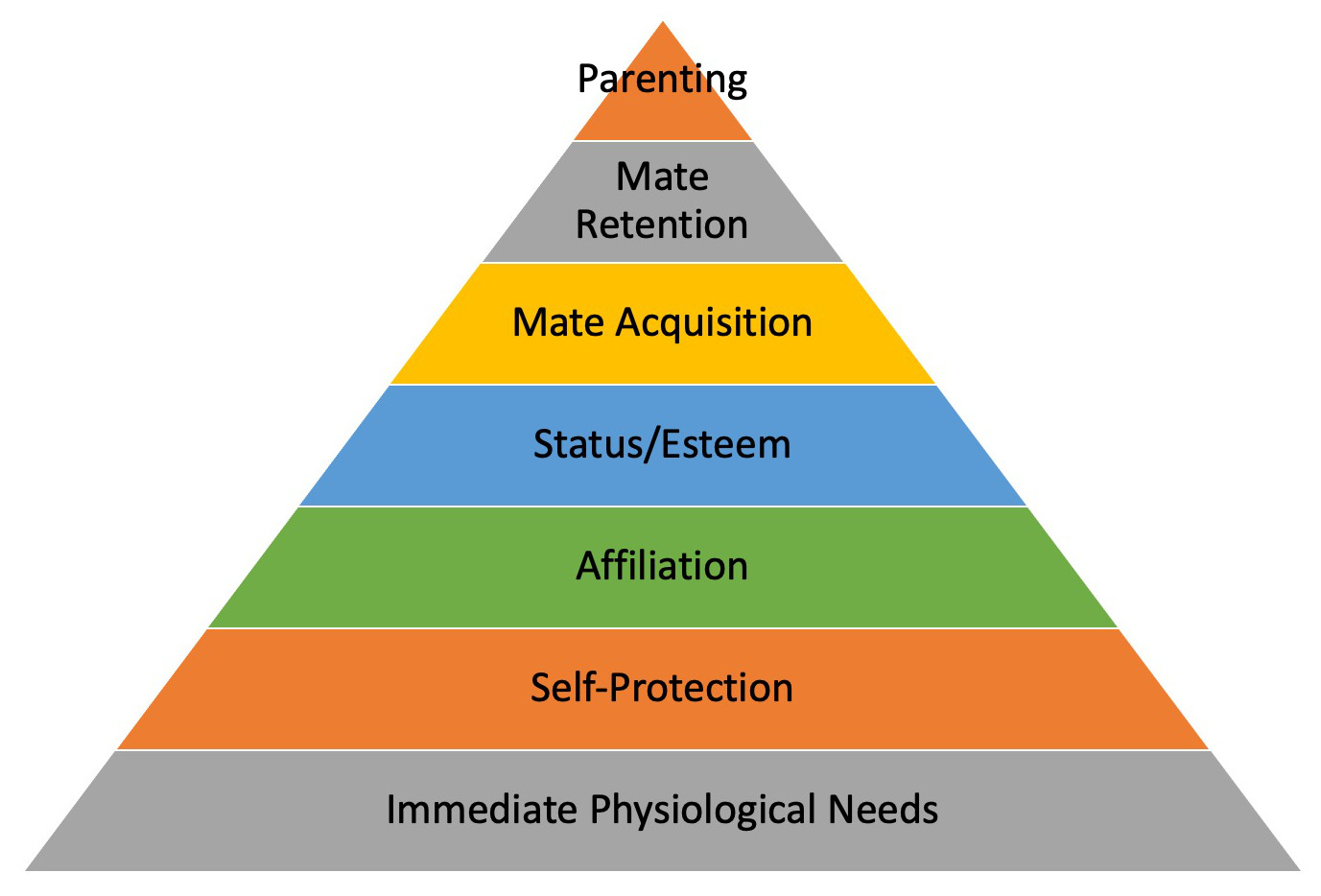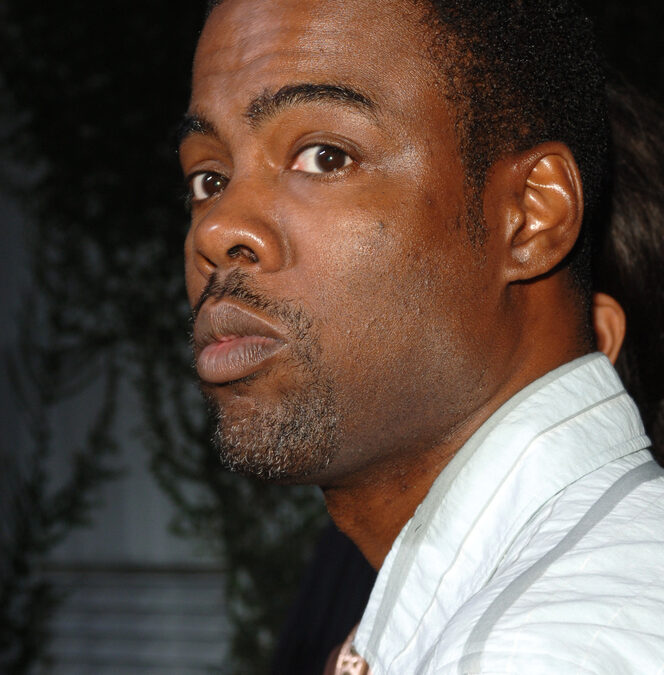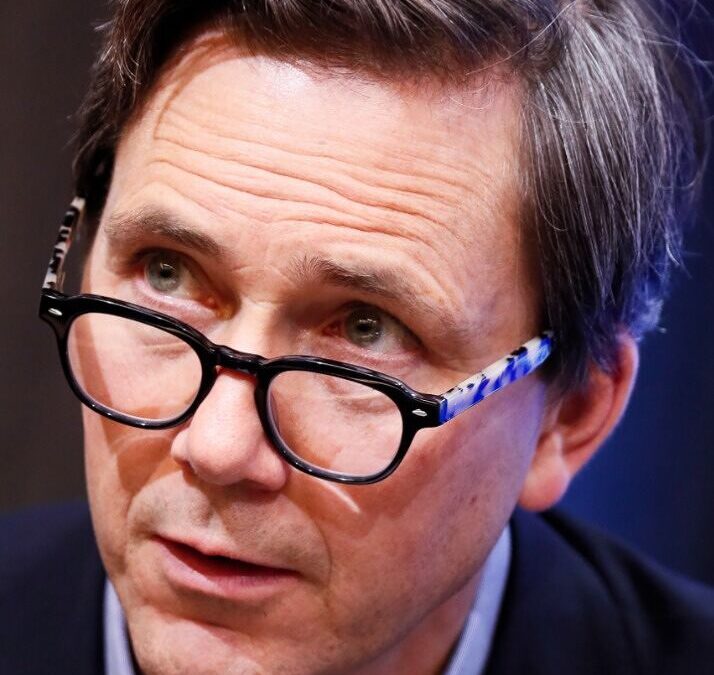One moment in Barbie has become a rallying cry for women. Across social media, women have said the speech given by America Ferrera’s character, Gloria (a Mattel executive), perfectly articulates the silent expectations and challenges they face under patriarchy. After the monologue concluded, applause and howls erupted from my Austin audience and reportedly from audiences around the country.
Ferrera told Vanity Fair that the scene took two days and between 30 to 50 takes. Obviously, director Greta Gerwig wanted to get this right. This speech may be her apotheosis – the main message of the movie. (See full text of the speech in Appendix below.)
Gloria’s rant appears to have no satirical intent (unlike much of the movie). Gerwig is playing it straight. She believes these complaints, expectations, and double binds are true for women and are primarily imposed or entirely imposed by men or the patriarchy – even if, it seems, other women are also involved in creating or upholding them. (A double bind is a situation where you are damned if you do, damned if you don’t, and usually damned if you talk about it.)
Set Up for the “Impossibility of Being a Woman” Speech
After Barbie returns to Barbieland with Gloria and her daughter Sasha, she is devasted to find the Kens have taken over and (somehow) brainwashed the rest of the Barbies. Barbie sobs, telling Gloria that she feels she’ll never be good enough. Gloria then launches into a monologue outlining the contradictions and challenges suffered by womanhood.
Gloria’s Real-Life Struggles?
There is no depiction of Gloria’s real-life struggles in the movie. Does she have problems with discrimination at work? Abuse by her husband? Pay discrepancy? Marriage problems? Her sadness is the root of Barbie’s sadness, yet what is the source of her sadness? What are the transgressions of the patriarchy — the actual examples of her subjugation specifically? We get none of that. We know Gloria has a parent-daughter issue. Gerwig said in one interview that Barbie is mostly a film about a mother-daughter conflict. (Gerwig said many different things, as does the movie.)
Twelve “Complaints” by Women in Barbie
1. Body shape and being thin
“You have to be thin, but not too thin. And you can never say you want to be thin. You have to say you want to be healthy, but also you have to be thin.”
Women carry the burden of needing to be physically attractive to be desired as a mate. Physical features signal fertility: waist-to-hip ratio, lower back curvature, and facial and body symmetry. “Thin” generally means a waist-to-hip ratio of around .7 or .8. If a woman has a large waist and belly fat, she would not be considered sexually desirable because she would be perceived as less fertile. Women have babies; men do not. Fertility matters for women in the science of attraction. This is the basic biology of sexual reproduction. (Stereotypical Barbie was definitely thin; “curvy” Barbie, introduced in 2016, was heavier but still had close to a .7 waist-to-hip ratio.)
But Is There a Double Bind?
How many men say to women, “please be thin, but not too thin?” How often do men commonly rebuke women for saying they want to be thin? Hmm. I am skeptical about the frequency of this.
Thinness is a definite requirement (burden) for women and a possible double bind.
2. Need to have money but never ask for money
“You have to have money, but you can’t ask for money because that is crass.”
Going to have to call “poppycock” on this one. Do young women feel they have to have money to be attractive to men? Relative to men, women do not have to have money to be desired. Almost never. In fact, this is an insult to men because of the strong expectation for men to have resources to be datable or marriageable. I am surprised that this was written into the speech. This is not a requirement for women.
Asking for money is considered crass by anyone and everyone. Is it a special burden for women? Well, if they are very reliant on a man for their economic survival, then asking for money can be a burden. More necessary than crass.
Both parts of this complaint seem invalid, but “having to have money” does not comport with heterosexual mating and sexual psychology or with dating survey data.
3. Leadership 1 and 2
#1: “You have to be a boss, but you can’t be mean.”
This is the most legitimate of the double binds listed. I wrote a blog post on this: Double Binds for Women in Leadership.” I noted the case of Carol Moseley-Braun, comments about Alexandria Ocasio-Cortez, and especially the case of Hillary Clinton. I cited a Pew Research Center study of 2017 on the biases women face, additional research on gender stereotypes, and the “three predicaments” identified by Catalyst, an organization that supports “workplaces that work for women.”
#2: “You have to lead, but you can’t squash other people’s ideas.”
This is not really a double bind regarding intelligent leadership (you can and should lead without “squashing”), and it also applies to male leaders. But, going along with the above double bind about meanness, women are probably given less leeway to squash other people’s ideas than men. Men probably can get away with this autocratic style more than women.
4. Motherhood
“You have to be a loving mother but don’t talk about your kids all the damn time.”
Yes, we expect mothers to be loving. No doubt. But who is telling women not to talk about their kids? Men or male partners? Bosses at work? Other women? Other mothers? Other couples or mixed company in social settings?
Is this really a double bind? Isn’t it easy to demonstrate that you are a loving mother without talking about (bragging about) your kids all the time?
5. Be a career person but always look out for other people
“You have to be a career woman, but always be looking out for other people.”
Who or what is putting on this pressure on women to have a career other than the economic reality of being a single breadwinner and head of a household? Most American families need dual incomes to survive. But who is saying that you must have a career? Men? The “patriarchy?” Or just the reality of needing enough income to pay the bills. The “richness” of this so-called unfair expectation is that men REALLY DO have to have a career or a decent job to be considered upright and acceptable.
Working after Work
The second part of this complaint is “always look out for other people.” If “looking out for other people” means that working women must care for their children and also “keep the home afloat” (even though they work 40 or more hours a week), then this is a legitimate complaint. Men generally do not do 50% of the work around the house or equal caretaking of children. Thus, working women have a “second job” when they get home. (But, it is unclear this is what is meant in the speech.)
6. Men’s bad behavior
“You have to answer for men’s bad behavior, which is insane, but if you point that out, you’re accused of complaining.”
This one needs examples. What is the bad behavior, and what does the “answering” look like? Who is pressuring women to do this “answering?” To whom are women answering?
This sounds like a valid part of a woman’s experience. Still, the general public of men, (the holders of the patriarchy) may need some direct feedback and behavioral coaching to correct this. We need to hear these stories/examples. And who is accusing you of complaining? The aforementioned men who behaved badly?
The possibility of a double bind exists with this complaint (with perhaps overtones of gaslighting in extreme cases), but it needs more detail.
7. Being pretty (by itself) and being pretty related to sisterhood
“You’re supposed to stay pretty for men, but not so pretty that you tempt them too much or that you threaten other women because you are supposed to be part of the sisterhood.”
Yes, men want you to be pretty, especially if you are their girlfriend or wife. But “not so pretty?” Perhaps that means — be attractive to me as my partner, but somehow don’t be attractive to other men. Ok, that is a double bind. And if you tempt men who belong to other women, you are not a good “sister.” Fair enough. That is part of the same double bind, although women engage in intrasexual competition and attempt to poach the men of other women.
The Core Belief of the Barbie Apotheosis – the System is Rigged Against Women
8. Acknowledge that the system is rigged, but always be grateful.
“But never forget that the system is rigged. So, find a way to acknowledge that but always be grateful.”
What is meant by the system being rigged? How is the system rigged? Is it an amalgam of patriarchal oppression signified by the aggregate wage gap or the percentages of women in the upper echelon of government and corporations?
Aggregate Wage Gap and Women in C-Suites Do Not Prove Rigging
“Patriarchy” in feminist theory (and in “Barbie) is often associated with the idea of inordinate male power fueled by a malicious intent to hold women down using outright discrimination. But the aggregate wage gap and the percentages of women in government and corporate executive suites do not prove discrimination. That sacred trope of left-feminist politics does not reflect the evidence from economic research. It is a misreading of women’s choices related to academic disciplines, career tracts, and preference to have and raise children. (A complete discussion of this is beyond the scope of this post.)
A Zombie Lie
Bill Maher called Barbie a “zombie lie” in its depiction of patriarchy and a “rigged” system. A zombie lie is a lie that never was true, but certain people refused to stop saying it; or it is something that used to be true but no longer is, even though some people pretend it is still valid. (Like trickle-down economics or an aggregate wage gap caused by discrimination.)
Maher went on to say that “the real Mattel board is pretty close to a mirror of the country where 45% of the 449 board seats filled last year in Fortune 500 companies were women.” Barbie depicts the Mattel board as all men. In reality, it has seven men and five women.
Women Are Part of the System
Barbie seems to believe that there is a patriarchal system that holds down the empowerment and advancement of women and that they have no causal relationship to that system; it’s rigged, and women are not involved or responsible for how the system is constructed. From a perspective of mate selection science, women collude with men and are causal to men running things at the top — because women want to mate with those men.
The Dream Gap and Achievement Gap
This idea of the system being rigged against women ignores the dramatic advantage in achievement (the achievement gap) that girls and women currently have over boys and men in academia and in the careers of millennials and Gen Z Americans. Forbes reported in 2020 that the law reviews of the top 16 law schools in the US all had a female editor-in-chief. That is 16 out of 16!
At my movie theatre in south Austin, a pre-movie ad advocated for closing the “dream gap” for girls. But it is boys who need support in their dreams and achievement in 2023 America. The girls are doing much better than the boys right now. If you want more girls in STEM (science, technology, engineering, and mathematics), fine. Give them that dream. But they will have to have a natural inclination and want it.
Mattel Has Been in the Girl-Dream Business from the Very Beginning
Mattel has given Barbie 200 different careers since 1959 – including surgeon, dentist, math teacher, judge, architect, aircraft engineer, astronaut, astrophysicist, chemist, microbiologist, robotics engineer, business executive, space scientist, and US President. It is not foolish to say that Barbie has done more than its part to “unrig” the patriarchal system. Barbie was nearly a feminist icon before she found the big screen.
Here is What Rigging Actually Looks Like
If Gerwig had said the following about a rigged system, she would have been correct:
– American corporate culture is rigged against women by not providing paid leave for childbirth, provisions for childcare, and flexible work scheduling. (It is also rigged against men by not allowing paid paternity leave.)
– American capitalism, tax laws, and consumer credit are rigged to advantage the rich and disadvantage the poor and middle class.
– U.S. federal government is run primarily by men who protect the rich, although these men were elected by women as well.
– Presidential political primaries and our electoral college system can rig outcomes against the will of the simple majority.
– American judicial system and legal representation are rigged in favor of the monied class.
– Insurance, drug, and hospital corporations rig American health care to its detriment.
Who is to Blame for the Rigging of Profit Over People?
Is all this “rigging” a patriarchal plot? Perhaps. It is primarily men who make the federal laws and the governing rules inside corporations.
Maybe the corporate capitalistic culture in America is rigged against women because of the lack of a social safety net for the family — like the systems in the social democracies of Europe. Who is to blame for that? Just men? Who is to blame for rigging the American system to value profit over people? Just men? Well maybe. But I don’t think that is made clear by Gerwig. I don’t believe that is what she means by saying the system is rigged. We do not know precisely what she means by rigging the system. Gerwig’s movie is deft with satire and replete with internal contradictions.
Pressure to Acknowledge and Be Grateful?
Assuming that women believe the system is rigged against them, why must they acknowledge that, as asserted in the apotheosis speech? Who is pressuring them to acknowledge that? What is the political motivation for that pressure?
And women are expected to be grateful no matter what? Who says that? Perhaps some men do. But most men in today’s environment do not say that women should be grateful – that has zombie lie written all over it.
9. Never get old, show off, be rude, or selfish, or get out of line
“You have to never get old, never be rude, never show off, never be selfish…… never get out of line.”
Never getting old probably relates to the need to be (stay) pretty, as in #7 above. It is a legitimate “pressure” given the need to attract and keep men as mates.
Never be rude, show off, be selfish, or get out of line, relates to #3 above, the double bind of women as leaders. That is a real double bind. The question is how forceful and pervasive is the request to “never be” (fill in the blank) and who is doing the asking. Is it coming from men?
10. Never fall down, fail, or show fear
“You have to never fall down, never fail, never show fear.”
This expectation feels entirely self-imposed. It totally makes sense for men and the expectations for virile masculinity (what is called the “man box.”) This expectation of men is so pervasive (and women impose this, directly or indirectly) that it feels ironic (and thus irritating) as a complaint from women. Men do not, as a rule, need their women to never fall down, never fail, or never show fear. Those qualities may be great, even attractive, but they do not contribute much to the male desire of women sexually or as partners. If anything, men want the opportunity to catch a woman when she falls . . . men need to be useful and want to do that. This “Barbie” complaint is self-imposed by women on women.
11. You are doing everything wrong. It is all your fault.
“And it turns out in fact that not only are you doing everything wrong, but also everything is your fault.”
Who is saying this to women? In what context? “Everything?” “All?” This assertion needs clarification and evidence. This complaint also seems quite ironic if you consider just how pervasive the memes are that men are toxic, useless, stupid, and unnecessary. Those messages about men are everywhere in print, on the internet, and in many cultural art forms (television shows, commercials, and movies). I would submit that men, not women, are getting the message that “it is all your fault.”
Is it possible that Gerwig is engaging in satirical speech? Or is she shooting it straight with female-centric self-loathing? Women may indeed feel this. (Actually, I suspect they do.) But don’t make it part of the feminist position paper inside this movie unless you put some “meat on the bones” with examples or wink at the audience so they know this is presented tongue-in-cheek.
12. Never being appreciated for all of this
“Nobody gives you a medal or says thank you!”
This is a human failing on both sides of the gender divide. But it is worth noting that Mother’s Day is considered somewhat more important in the United States than Father’s Day as measured by gifting behavior and survey responses.
Conclusion
Women have legit complaints about the need to be pretty, the lack of permission to be angry and mean as a female leader and having to do more than their share of household management. Many of the apotheosis complaints and double binds also exist for men. In fact, the double binds about never failing, and never showing fear are almost exclusively a problem for men and not women. Most importantly, the system is rigged by both men and women to value profit over people and rich over poor — not men over women. Women and girls in 2023 are doing better than men and boys by a significant margin. Barbie perpetuates a “zombie lie” – but the fun is just starting. Stay tuned for my next post about the movie Barbie.
*Apotheosis: the highest point of development of something, the culmination or climax
Appendix: Full text of Gloria’s Apotheosis Monologue
“It is literally impossible to be a woman. You are so beautiful and so smart, and it kills me that you don’t think you’re good enough. Like, we have to always be extraordinary, but somehow, we’re always doing it wrong. You have to be thin, but not too thin. And you can never say you want to be thin. You have to say you want to be healthy, but also you have to be thin. You have to have money, but you can’t ask for money because that is crass. You have to be a boss, but you can’t be mean. You have to lead, but you can’t squash other people’s ideas. You have to be a loving mother but don’t talk about your kids all the damn time. You have to be a career woman, but always be looking out for other people. You have to answer for men’s bad behavior, which is insane, but if you point that out, you’re accused of complaining. You’re supposed to stay pretty for men, but not so pretty that you tempt them too much or that you threaten other women because you are supposed to be part of the sisterhood. But always be grateful. But never forget that the system is rigged. So, find a way to acknowledge that, but always be grateful. You have to never get old, never be rude, never show off, never be selfish, never fall down, never fail, never show fear, never get out of line. It’s too hard! It is too contradictory, and nobody gives you a medal or says thank you! And it turns out in fact that not only are you doing everything wrong, but also everything is your fault. I’m just so tired of watching myself and every single other woman tie herself into knots so that people will like us. And if all of that is also true for a doll just representing women, then I don’t even know.” (In another part of the movie Gloria also says that women must “always stand out.”)
Author’s Note:
Another Barbie post is coming! I will discuss issues of gender, patriarchy, degree of man-hating (misandry) and Barbieland as an apartheid state, male fragility, male and female sexuality, mate selection and reproduction in the real world vs. Barbieland, and much more.







